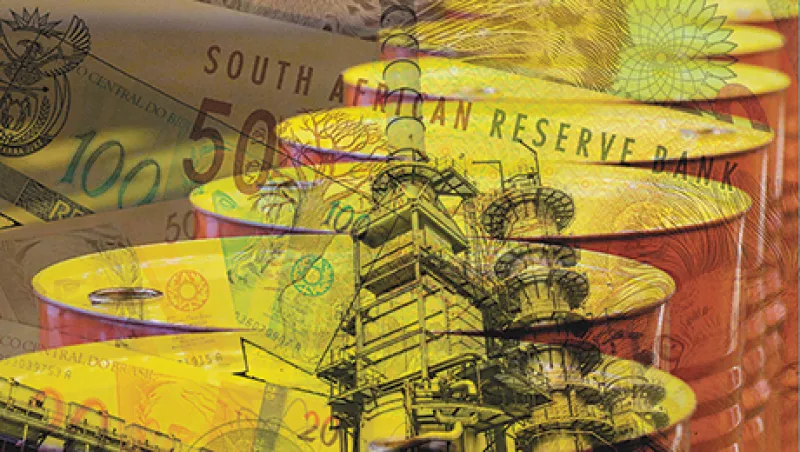Judging by the markets, many investors have concluded that the U.S. dollar is accelerating its recovery from a decadelong downtrend and is headed skyward. At the same time, the Russian ruble and Brazilian real, two key currencies in developing-markets strategies, have plunged in value in the past six months. What are the lessons for emerging-markets currencies for the coming year?
For one, that sure-thing rate increase by the U.S. Federal Reserve Board now seems less of a certainty. John Williams, president of the Federal Reserve Bank of San Francisco, who will vote as a member of the Federal Open Market Committee on whether to begin increasing rates, says that by June he expects the arguments for and against it to be a “close call” because of moderating price pressures.
But even if the dollar does keep rising as expected, analysts believe some emerging-markets currencies will be safer bets than others. Claudio Piron, head of emerging-markets Asia fixed-income and forex strategy at Bank of America Merrill Lynch in Singapore, reckons that Asian emerging markets will suffer less than those in Latin America and Europe. According to Piron, two factors work in favor of Asian currencies: Commodity prices are headed down (most Asian economies besides Indonesia are oil importers), and geography isolates the region from such stresses as fighting in the Ukraine, the Middle East crisis and European economic woes.
“Asia will be shielded, but we’re not in denial; we believe a stronger dollar is a global phenomenon,” Piron says. Merrill Lynch has advised clients to short most Asian currencies against the dollar, but he thinks those currencies will fare better than their peers in other emerging markets. Piron especially likes the Indian rupee, which had declined only 5 percent in the six months ended mid-January, because India is Asia’s second-largest importer of oil and the decline in oil prices will probably buoy the economy as well as the rupee. The country also successfully navigated the democratic election of Prime Minister Narendra Modi, who has promised an economic revival.
Despite rising expectations of a Fed hike, currencies of developing-markets countries with high inflation, such as the South African rand and the Turkish lira, will be attractive, contends Piotr Chwiejczak, an emerging-markets forex analyst for BNP Paribas in London. Chwiejczak reasons that lower oil prices in these nations, along with stricter central bank policies aimed at improving creditworthiness abroad, will lead to a dramatic improvement in inflation and current accounts in India, South Africa and Turkey.
Some analysts fear that higher U.S. rates will kill the carry trade, which sees investors borrow currencies at low interest rates to buy investments denominated in higher-yielding currencies. Chwiejczak believes it will continue, but perhaps denominated in euros or Japanese yen, low-yielding currencies that are expected to drop even lower in the months ahead because the European and Japanese central banks have embraced quantitative easing.
“People forget that the creditworthiness of Spain is not different than Hungary in terms of debt-to-GDP ratios, but Hungary is offering 150 basis points more on their five-year bonds than Spain because Madrid has the euro,” Chwiejczak says. He recommends going long the Hungarian forint against the dollar. Chwiejczak also likes the Polish zloty and the Czech koruna for much the same reason. “The zloty has the highest real rates in the emerging-markets world,” he says, putting it at 2.5 percent. Real rates are nominal interest rates adjusted for inflation, which in Poland turned negative last year.
Ilan Solot, a London-based emerging-markets forex analyst for Brown Brothers Harriman & Co., says hedging emerging-markets currencies will become a key consideration in the year ahead. Although some investors like Indonesia, for example, because it holds democratic elections and is relatively isolated from global economic pressures, Solot says its currency has relatively little liquidity in forex markets: “Especially in times of stress, the rupiah can be difficult to trade.”
For the same reason, Solot prefers the Mexican peso to the Colombian peso or the Peruvian nuevo sol because the latter are thinly traded and their nations’ central banks frequently intervene in the market. “If you have a big position in those currencies, it can be hard to get out,” he says. Even major currencies could be risky without hedging, Solot notes. Dollar-based investors in Japan’s Nikkei 225 index gained 7 percent in 2014, but they lost 14 percent on the yen if they hadn’t hedged, he points out.
Instead of dollar bets, Solot recommends value plays of one emerging-market currency against another. One option is to go long the Mexican peso against the dollar while shorting the rand against the U.S. currency, thereby neutralizing the influence of the greenback’s rise on developing economies. But making this strategy work still requires picking the better-performing emerging-markets currencies, a task that could prove a major challenge in 2015. • •






